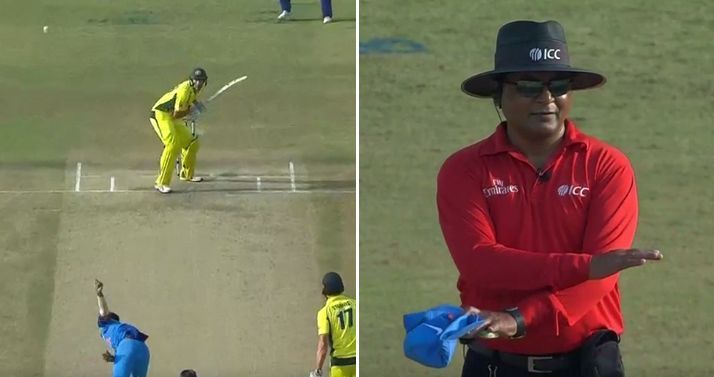
Contrasting dead balls dominate headlines in third ODI

Sometimes you lose your line and length towards the end of the innings when the batsmen are hitting you to all corners of the pitch. Bhuvneshwar Kumar not only missed his length but also the entire pitch as he came out and delivered the final ball of his spell in the third ODI.
While the first dead ball of the game was in accordance with Law 23, the second one delivered by Pat Cummins was debatable especially after Marcus Stoinis failed to collect a throw from Steve Smith before the ball was called dead.
Coming into to bowl the last ball of the penultimate over of the Australian innings, Bhuvi went for a slower ball before the ball slipped out of his hand and landed on the adjacent pitch. IT would have been a no ball for height and the leg umpire Marais Erasmus called it as such, but it was eventually deemed a dead ball as the delivery was accidental. The next ball was full and wide and didn't end up costing the right-arm pacer much.
You can watch the video of the delivery here.
In the third over of the Indian innings bowled by Pat Cummins, Ajinkya Rahane punched the ball into the off side where it was fielded by Steve Smith. The throw from the Australian captain towards the bowlers' end was way off and beat the fielder at mid-off who was unable to collect it and it went to the boundary. However, the umpire deemed that it was a dead ball but the ball was counted.
Here is what the law 23, pertaining to dead ball states according to the MCC.
Law 23 (Dead ball) 4. Umpire calling and signalling Dead ball
(viii) the bowler drops the ball accidentally before delivery.
In this case, it was pretty obvious that the ball accidentally slipped out of the bowler's hands and this is the law regarding the ball not counting as one for the over. In this case, since the ball was way out of reach of the batsman who had no way of playing the delivery, the ball was called dead and he had to bowl it again.
23. 6. Dead ball; ball counting as one of over
(a) When a ball which has been delivered is called dead or is to be considered dead then, other than as in (b) below,
(i) it will not count in the over if the striker has not had an opportunity to play it.
(ii) it will be a valid ball if the striker has had an opportunity to play it, unless No ball or Wide has been called, except in the circumstances of 4(b)(vi) above and Laws 2.6 (Fielder returning without permission), 41.2 (Fielding the ball), 42.4 (Deliberate attempt to distract striker) and 42.5 (Deliberate distraction or obstruction of batsman).
(b) In 4(b)(v) above, the ball will not count in the over only if both conditions of not attempting to play the ball and having an adequate reason for not being ready are met. Otherwise the delivery will be a valid ball.
There was plenty of debate about the legality of the delivery bowled by Bhuvneshwar Kumar: